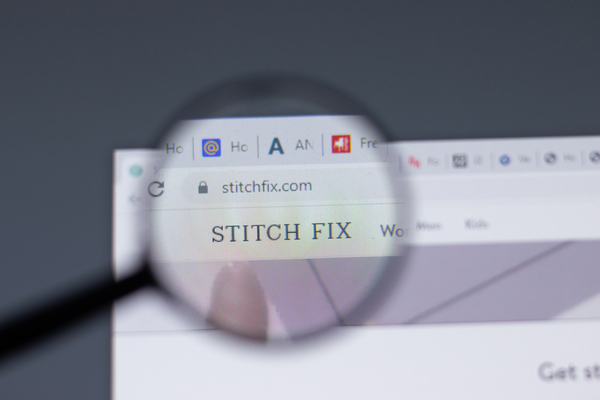Stitch Fix, known for its mix of AI and human stylists, is shifting full-time hours for stylists to a part-time-only employment model, which will take effect on March 31. As WWD reports, Stitch Fix in recent quarters has narrowed its losses and grown margins, in part due to a tight grip on expenses. But profits remain elusive, and its sales and number of active customers have both continued to fall in recent quarters.
The brand has opted for a belt-tightening strategy after it faced a series of down quarters, and the latest quarter in December beat estimates and pulled adjusted losses below expectations with a reported revenue of $364.8 million, which was a 17.8% year-over-year net revenue decline for Q1 and a 15% drop in its number of active clients. As Retail Dive reports, that marked seven straight quarters of year-over-year sales declines, averaging 18%, with double-digit declines expected to continue, according to Wedbush analysts led by Tom Nikic.
Those analysts last month acknowledged the progress on the bottom line, adding, “At some point, however, they need to turn around the top line.” The most recent layoffs and employment policy changes affecting its styling teams indicate that the company is looking to trim yet more.
“As we continue to evolve our business to ensure we are delivering the most innovative, personalized and convenient online styling experience, this week we shared changes to our organization, including moving to a part-time only model for Stylists,” a Stitch Fix spokesperson said by email. “The majority of our stylists work part-time, from their homes, choosing a schedule that suits their lifestyles. By moving to a fully part-time model we are able to maintain this level of flexibility, while effectively meeting the needs of our clients and our business.”
Stitch Fix stylists have always been a combination of full- and part-time workers, but their numbers have been shrinking: The brand employed 5,100 stylists in 2020 compared to 2,620 stylists in July 2023.
Any full-time stylists who choose to leave will receive severance, healthcare and career transition support. Most so far have opted to work part time and will receive a payment for staying, the company said. They can choose to work 28 hours or 12 hours per week, or opt for a flexible range of about 10 to 20 hours per week. Their benefits will also convert to a suite of mental wellness and family planning resources, per the company’s email.
—
Photo Credit: Postmodern Studio / Shutterstock.com
